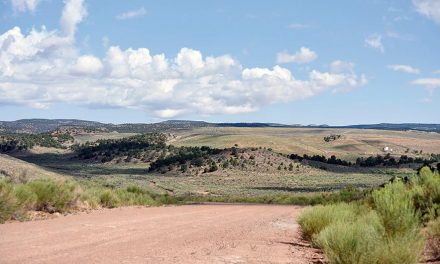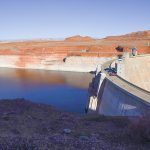
Guest Column | Hope in drought – what the world could learn from Natives
By Lynn Kellogg
In December of 2021, I retired after 45 years in the field of aging, serving as CEO of the Area Agency on Aging in southwest Michigan.
I can’t think of a more satisfying career than finding ways to help elders stay independent in their homes for as long as possible.
A long board tenure as a member, then president of the National Association of Area Agencies on Aging, now known as USAging, allowed me to work with an amazing array of colleagues across the country.
It was there I met LaVerne Wyaco representing Navajo Nation, and we formed a fast friendship.
As a retirement present, I planned a desert immersion for mid-winter. I needed re-entry to the natural world, and it didn’t disappoint.
First came an expedition with National Geographic on a small ship exploring marine life and whales in their winter breeding grounds around the Baja Peninsula.
The latter part of the trip was in Arizona and New Mexico to visit a grandson near Phoenix, friends in Sedona, and reconnect with LaVerne on the reservation.
The different locations gave varied looks at desert living. Blatant commonalities were worries about water and temperature.
The Baja struggles for water. Locals expressed frustration initiating crops only to have them wiped out by drought. The rise in tourism is both welcomed and cause for concern in terms of impact on the local ecosystem and water supply.
Desalination efforts, on the rise, are also problematic. They’re expensive, require extensive energy to run, and produce large amounts of brine as a waste product which is often dumped on beaches. The environmental impact is unstudied.
In the states, Arizona’s deserts and red rock canyons never fail to impress. Water has always been a challenge here.
A new study in the journal Nature Climate Change stated the American West’s megadrought deepened in 2021 so that it is now the driest in 1,200 years.
In August, 90% of the West was in drought. A map of record-breaking high-temperature locations shows hundreds and hundreds of locales from Arizona to Washington. In January 2022, the first-ever federal water cuts were scheduled to start in Arizona and Nevada.
The Nature Conservancy’s chief scientist, Katherine Hayhoe, points out, “Throughout human civilization, the average temperature of the Earth has varied by no more than a few tenths of a degree.”
Once taken for granted, that stability no longer exists. Temperatures are already up 2 degrees Fahrenheit and estimated to rise to 2.7 degrees within two decades.
Hayhoe adds, “Earth is now running a fever with scientists agreeing the global temperature increase is human-caused.”
Since the Industrial Revolution, we’ve been burning more and more coal, gas, and oil, with emissions creating a heat blanket over the planet responsible for 75% of our climate problem.
Additionally, continued deforestation is destroying Earth’s natural cooling agent – trees.
The world could take a lesson from the Navajo and other Indigenous populations. With remote and solitary living common, water conservation and lifestyle suited to the land are ways of life.
Especially coming from Michigan, surrounded by great lakes which comprise 20% of all the fresh water in the world, this adaptation to little water is impressive.
Where is hope? It’s found in increasing public awareness and support for change. Nature is resilient if given a chance.
Robert Kunzig, National Geographic’s environment editor, finds inspiration in unheralded efforts around the globe. It’s found in communities planting trees, schools focusing science projects on sustainable agriculture, and acknowledging the need to change power sources.
On a macro level Kunzig adds, “…during COVID in 2020, 90% of new energy installed around the world was clean energy.”
Locals seemed to support the direction as environmentally needed, stopping for gas when driving by the Cholla Power Plant, a coal-fired plant scheduled for closure. Collective support and action are so important; the inter-dependence of people is real.
I am grateful for my friend LaVerne and any far-reaching friendships that bring understanding and connection.
We must not view climate as out of our control. We all can make a difference.







 Highway 264,
Highway 264, I-40, WB @ Winslow
I-40, WB @ Winslow